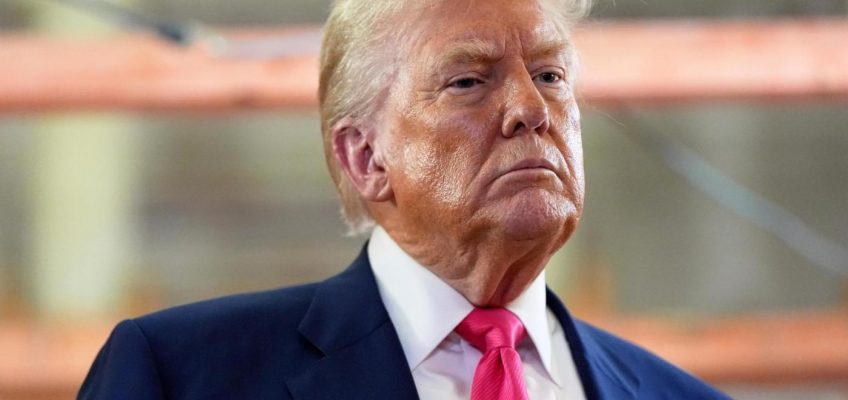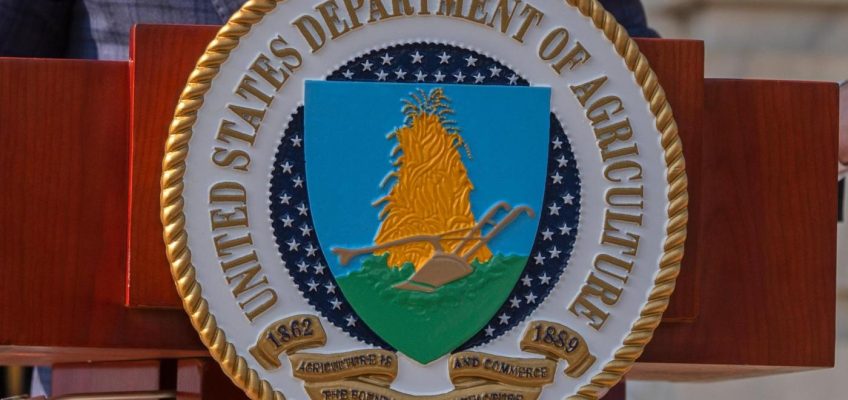By TODD RICHMOND, Associated Press
MADISON, Wis. (AP) — The father of a Wisconsin school shooter must stand trial on charges he allowed her access to the guns she used in the deadly attack, a court commissioner ruled Thursday, rejecting arguments that he didn’t know she was considering violence and didn’t physically hand her the weapons at the school.
Dane County Court Commissioner John Rome issued the order in Jeffrey Rupnow’s case following a preliminary hearing, a routine step in the criminal justice process in which a court official decides whether enough evidence exists to order a trial.
Rupnow, 43, faces two counts of intentionally giving a dangerous weapon to a minor and one count of contributing to the delinquency of a minor. The charges carry a combined maximum sentence of 18 years in prison.
Jeffrey Rupnow, father of Abundant Life Christian School shooter Natalie Rupnow, looks towards the state prosecutors during a preliminary hearing on Thursday, July 24, 2025, at Dane County Courthouse in Madison, Wis. (Owen Ziliak/Wisconsin State Journal via AP, Pool)
Deadly attack at Madison school
Rupnow’s 15-year-old daughter, Natalie Rupnow, opened fire in December at Abundant Life Christian School, a religious school she attended in Madison. She killed teacher Erin Michelle West and 14-year-old old student Rubi Bergara and wounded six others before she shot herself in the head.
Investigators recovered a 9 mm Glock handgun from the room where Natalie Rupnow died as well as a .22-caliber Sig Sauer pistol from a bag the girl was carrying. Also in the bag were three magazines loaded with .22 ammunition and a 50-round box of 9 mm ammunition.
Prosecutors charged Jeffery Rupnow this past May, alleging in a criminal complaint that he told investigators his daughter was struggling to cope with her parents’ divorce and he bought her the guns as way to connect with her.
He also told investigators that he kept the guns in a safe but told her the code to unlock it, according to the complaint. The day before the school attack, the complaint says he took the Sig Sauer out of the safe so she could clean it, but he wasn’t sure if he put the weapon back in the safe or locked it.
Jeffrey Rupnow, father of Abundant Life Christian School shooter Natalie Rupnow, appears for a preliminary hearing on Thursday, July 24, 2025, at Dane County Courthouse in Madison, Wis. (Owen Ziliak/Wisconsin State Journal via AP, Pool)
Shooter declared a ‘War Against Humanity’
A search of Natalie’s room netted a six-page document the girl had written entitled “War Against Humanity,” the complaint said. She started the piece by describing humanity as “filth” and saying she hated people who don’t care and “smoke their lungs out with weed or drink as much as they can like my own father.”
She wrote about how she admired school shooters, how her mother was not in her life and how she obtained her weapons “by lies and manipulation, and my fathers stupidity.”
Rupnow looked on in silence Thursday as his attorney, Lisa Goldman, argued that he acted like a reasonable parent. He kept all their guns in a safe, which isn’t required under Wisconsin law. Many Wisconsin parents teach their children how to shoot and Natalie passed a gun safety course, Goldman added.
Even though he told investigators that Natalie was struggling over the divorce, he had no reason to think giving her guns would cause more problems, Goldman said. He didn’t know how to access her social media accounts, Natalie rarely let him into her room and her therapy records from 2021 to the spring of 2024 showed no indication of suicidal thoughts, Goldman added.
Related Articles
New sentencing dates set for 5 former Memphis, Tennessee, officers in Tyre Nichols case
Millions of HydroTech hoses recalled after hundreds burst, leaving at least 29 people injured
Union Pacific and Norfolk Southern confirm merger talks to create coast to coast railroad
Jazz legend Chuck Mangione, known for ‘Feels So Good,’ dies at 84
Philanthropist Wendy Schmidt insists science and immersive media can inspire action for the planet
Rupnow told Natalie that the gun safe code was his Social Security number in reverse but never gave her the actual number, Goldman continued. She questioned whether Natalie’s mother may have given her the number, pointing out that police never checked her mother’s electronic devices.
Goldman also argued that the school attack took place outside of Rupnow’s parental supervision — he was at his job as a recycling truck driver when Natalie opened fire — and he would have had to hand Natalie the guns at Abundant Life to be criminally liable.
Dane County District Attorney Ismael Ozanne countered that Goldman should make her arguments at trial, not during a preliminary hearing.
Rome said in his order sending Rupnow to trial that giving his daughter guns could amount to giving her the pass code and giving her the Sig Sauer the night before the attack.
Parents charged in school shootings across the country
Rupnow is another in a line of parents to face charges in connection with a school shooting.
Last year, the mother and father of a school shooter in Michigan who killed four students in 2021 were each convicted of involuntary manslaughter. The mother was the first parent in the U.S. to be held responsible for a child carrying out a mass school attack.
The father of a 14-year-old boy accused of fatally shooting four people at a Georgia high school was arrested in September and faces charges including second-degree murder and involuntary manslaughter for letting his son possess a weapon.
In 2023, the father of a man charged in a deadly Fourth of July parade shooting in suburban Chicago pleaded guilty to seven misdemeanors related to how his son obtained a gun license.




